There's more than meets the eye when you look at the iconic Woolworth Building in Lower Manhattan.
Here are 13 cool facts you might not know about this beloved early skyscraper in New York City.
- 13 Facts
- Architectural Design
- Nearby Attractions
- Woolworth Building Tours
- Other Famous NYC Skyscrapers
- Things to Do in New York City
13 COOL FACTS ABOUT THE WOOLWORTH BUILDING
The Woolworth Building is one of New York City's architecturally unique buildings.
While the cathedral-like exterior is recognizable among the city's skyline, the interior has some amazing features that many people don't know about.
The history of the building, as well as its current status, is quite interesting as well.
Since the Woolworth Building is closed to the general public, we recommend that you take a tour so you see one of the most famous and extravagant lobbies in the world.
The building is located at 233 Broadway and occupies the entire block front between Barclay Street and Park Place in Lower Manhattan.
1) The lobby is one of the most extravagant in the world
The marble lobby features glass mosaics, a huge vaulted ceiling, a stained-glass ceiling light, and bronze fittings.
There are eight sculptures that represent the individuals who made the realization of the building possible, including Woolworth himself!
The lobby is closed to the public but you can take a tour. These tours are excellent and highly regarded.
Find out about Woolworth Building Tours.
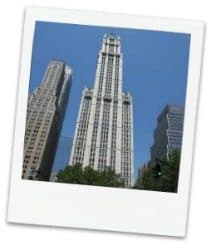
2) It was once the world’s tallest building
The building is 792 feet (241.5 meters) tall.
When it was built in 1913, it was the tallest building in the world!
It lost that title when the Bank of the Manhattan Company Building at 40 Wall Street was completed in 1930.
In turn, that building quickly lost its status when the Chrysler Building was completed.
Read about New York City's famous skyscrapers.
3) Woolworth was a self-made millionaire
Frank W. Woolworth, who commissioned the building, was a self-made millionaire.
He made his fortune by opening a chain of stores known as Five-and-Dime stores (or nickel and dimes) that offered very low-priced merchandise.
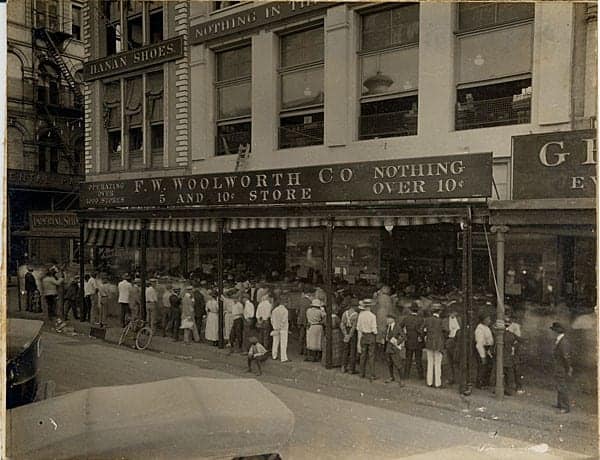
His stores were also the first to have self-service display cases that allowed customers to look and examine the items without having to ask a clerk to show them.
4) Woolworth paid for the construction in cash
Including the purchase of the land and the construction of the building, the total cost of the project was $13.5 million.
Woolworth paid for it all in CASH!
Today, $13.5 million is the equivalent of about $338 million!
5) “Cathedral of Commerce”
Because the building is of the neo-gothic style, it resembles a cathedral.
It even has gargoyles, like Notre Dame Cathedral in Paris!
As the home to many prominent businesses, including Woolworth’s own, the building was nicknamed “The Cathedral of Commerce”.
6) It had the fastest elevators in the world when it opened
There are 24 elevators in the lobby and two of them were the fastest elevators in the world in 1913. These high-speed elevators traveled 700 feet (210 m) per minute.
The elevators were supplied by the Otis Elevator Company. The company's founder, Elijah Armstrong Otis was a highly innovative inventor.
His elevator company designed the world's first hydraulic passenger which, in 1857, was installed in the Haughwout Building in SoHo.
Otis elevators are also in the Eiffel Tower and the Empire State Building.
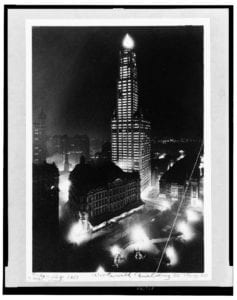
7) On Opening Day, President Woodrow Wilson turned on the lights
On April 24, 1913, the building was officially opened with a lavish private ceremony and dinner party with over 800 guests.
The building was inaugurated by President Woodrow Wilson who was in the White House in Washington D.C.
At 6:30 p.m., he pressed a button and switched on the building’s lights!
More than 5,000 windows were illuminated. Floodlights, which were fairly new at the time, were used to illuminate the exterior.
8) A company that helped develop the atomic bomb had an office here
During World War Two, the Kellex Corporation was based in the Woolworth Building.
Kellex Corp. was part of the “Manhattan Project,” the government's secret effort to create an atomic bomb, with Robert J. Oppenheimer at the helm.
Fun fact: The Manhattan Project had a warehouse in Chelsea next to the elevated railroad tracks that today are the High Line Park!
You can see it on our pay-what-you-wish High Line walking tour.
9) The architect was one of America's most famous
Architect Cass Gilbert, who designed the Woolworth Building, also designed the United States Supreme Court building in Washington, D.C.
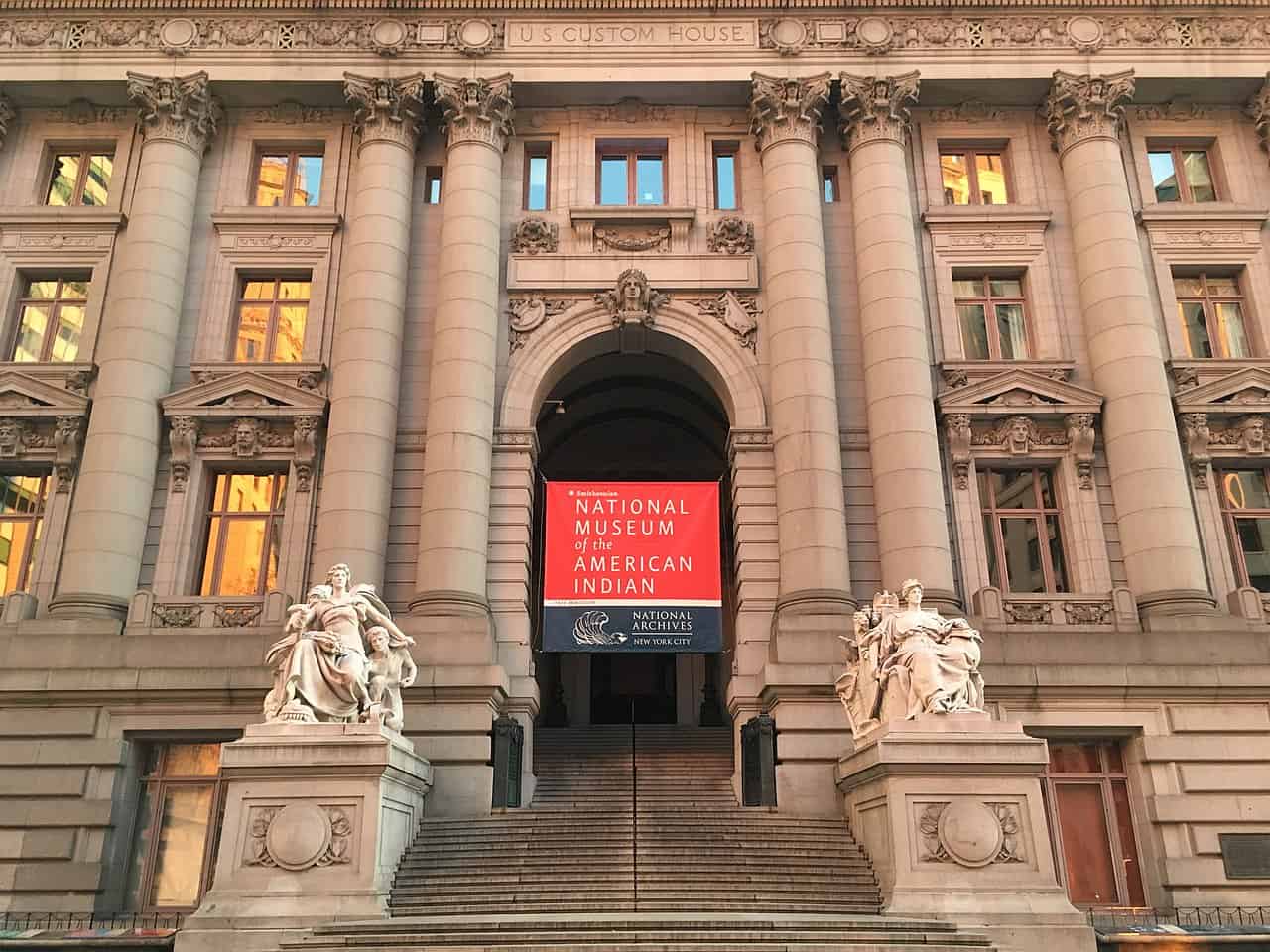
He also designed the Beaux-Arts style Alexander Hamilton Custom House, which today houses the Museum of the American Indian in Downtown Manhattan.
10) The penthouse apartment was listed for sale for $110,000,000
In 2012, Alchemy Properties purchased the top 30 floors of the building for $68 million and concerted the space into 33 condominiums.
The Pinnacle Penthouse in the Woolworth Tower Residences was initially listed for $110 million in 2017. No takers.
The price was lowered by over $30 million for an asking price of $79 million. No takers.
In 2023, the penthouse finally found a buyer who paid just $30 million!
That's a bargain in New York City!
11) There's a swimming pool in the basement
When the building was constructed, a swimming pool measuring 15 feet by 55 feet (4.6 by 16.8 m) was installed in the basement.
The pool ceased being used in 1999 when it was completely drained.
Then in 2012, the top 30 floors were converted to luxury condominiums and the pool was restored and opened for use by apartment owners.
12) The Woolworth Building has been in movies and tv shows
The Woolworth Building has appeared in several films and TV shows.
The lobby was used as the lobby of the headquarters of Meade Publications in the TV show Ugly Betty.
In the Disney film Enchanted (2007), the Kings and Queens Ball is held in the Woolworth Building (though actually a studio set). The top of the building is where the movie's climactic battle takes place.
It is also used as the office building where Nick Carraway works in The Great Gatsby (2013). In the opening scenes of Cloverfield (2008), the building is seen collapsing.
13) The Woolworth Building is a national landmark
Due to its history and architectural uniqueness, the Woolworth Building was designated a National Historic Landmark in 1966.
New York City gave landmark status to the building in 1983.
Just a few minutes walk from the Woolworth Building is the entrance to the Brooklyn Bridge. Walking across the bridge is a 'must-do' for visitors to New York.
Use our guide to walking the Brooklyn Bridge filled with helpful information. Check out our GPS-enabled audio tour that you can use any time of the day or night.
If you want to combine a visit to the Woolworth Building with other sights, we offer the below pay-what-you-wish tours:
- Brooklyn Bridge, Brooklyn Heights & DUMBO Tour – Daily at 9:45 and occasionally in the afternoon.
- 911 Memorial and Brooklyn Bridge Night Tour – Runs several evenings a week from April to October.
Other Nearby Activities
- Take a pay-what-you-wish guided walking tour of Lower Manhattan for an overview of the entire area.
- Visit the 9/11 Memorial and the National September 11 Museum.
- Take a free boat ride on the Staten Island Ferry.
- Go to the top of the One World Observatory (“Freedom Tower”) for jaw-dropping views of New York City.
- Visit the Statue of Liberty and Ellis Island – the departure point is less than a 20-minute walk from the Woolworth Building.
- Take a free guided tour of City Hall.
- Check out the South Street Seaport.
- Go to the free Museum of the American Indian.
For an in-depth look at nearby activities see our post on things to do in Lower Manhattan.
Construction and Architectural Design
Architect Cass Gilbert was initially tasked by Frank W. Woolworth with designing a 12 to 16-story commercial building.
The request was changed when Woolworth decided to challenge the height of the nearby New York World Building which was 20 stories tall and 350 feet high.
Gilbert complied but the plan changed again. Woolworth wanted the tower to rival the Singer Building in SoHo.
The building was then slated to be a 45-story tower cruising 550 feet.
Eventually, Woolworth settled on no less than owning the tallest building in the world and surpassing the 700-foot Metropolitan Life Insurance Company Tower.
The final height was a record-breaking 792 feet. It ushered in a new era of skyscrapers.
Though the building is dwarfed by today’s skyscraper standards, it is one of the most beloved structures of the New York skyline.
In creating such a tall tower, Gilbert pioneered the use of steel for its frame.
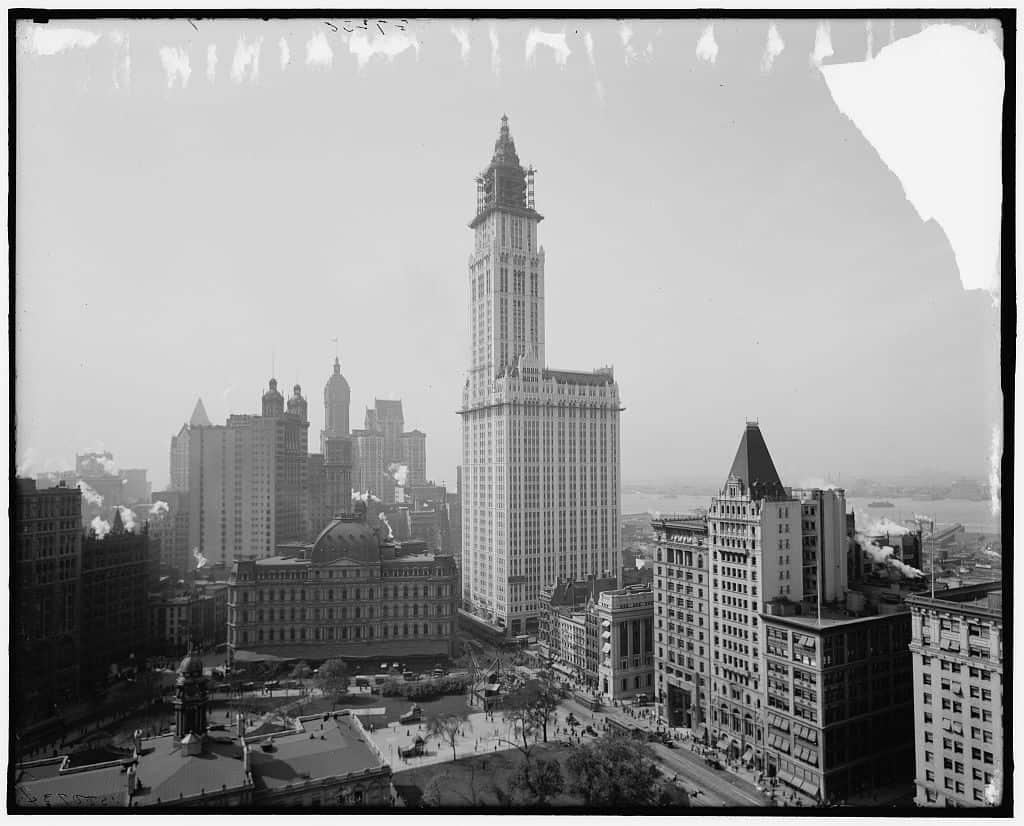
But it is the stunning exterior for which the building is known.
The design was in the Beaux-Arts style for which Gilbert and the firm he worked for, McKim, Mead and White, were known.
Woolworth asked Gilbert to integrate some of the neo-Gothic features of London’s Palace of Westminster.
The use of glazed terra cotta for the facade allowed for the beautiful features, like its elaborate sculptural arches and finials that make the Woolworth building so beloved today.






